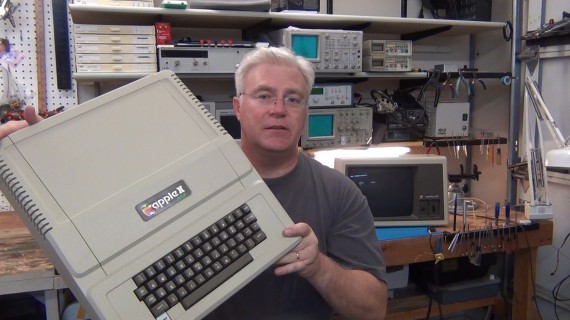In 1987, A 10MB Hard Disk Drive for the 8 Bit IBM XT PC could be purchased for about $500.00, a steep decline in cost over the price when first introduced about 5 years earlier. Today, no current mass storage media with such a small capacity is produced. The smallest capacity for a USB Flash “Thumb Drive” sold these days is 1GB and they are under $10.00 in all but the most highly marked up locations, but why even bother when 16GB can be had for less than $10.00 just about anywhere too. But wait there’s more… A common reasonably priced capacity for these things today (February 2014) is 64GB at $30.00, so let’s use that for comparison.
Keep in mind that 1 GB is 1,000 MB, The 64GB USB Thumb Drive has 64,000 MB…
1987: 10MB HDD ~$500.00 = $50.00/MB.
2014: 64GB USB ~$30.00 = $0.00046875/MB (less 5 ten thousandths of a cent per Megabyte).
What does this mean? For this comparison the cost per MB “Megabyte” (1 Million Bytes) [1 Million units of 8 bit data] has decreased by a factor of more than 106,000.
How about a comparison of what you get for the same price? OK so the USB Thumb Drive comparison was chosen for both capacity and performance (Even though it’s about the lowest performing current product it’s still much faster than that old 1987 HDD). Then what does one get for ~$500.00 today? A 1TB SSD can be bought for ~$500.00. That’s 1,000 GB or 1,000,000 MB (it’s One Trillion Bytes). Cost comparison…
1987: 10MB HDD ~$500.00 = $50.00/MB.
2014: 1TB SSD ~$550.00 = $0.00000000055/MB (0.55 billionths of a cent per Megabyte).
As for performance? A comparison is difficult. The 1987 Hard Drive had an “Average Seek Time” of 85ms. The 2014 SSD does not have moving parts and “Seek Time” is largely irrelevant for the speed of electrons over a few mm distance. A more fair comparison is Data Transfer Rate…
1987: 10MB HDD 5MB/second.
2014: 1TB SSD 520MB/second.
Therefore, cost has dropped by about one Trillion percent and performance has increased by 10,400%.
Also the SSD is inherently durable while the old HDD was very fragile. Projected lifespan is measured in MTBF “Mean Time Before Failure” (a weighted average of the typical endurance of the product)…
1987: 10MB HDD 11,000 Hours (1.25 years) They actually typically lasted 10 to 15 years.
2014: 1TB SSD 1,500,000 Hours (171 Years).
In Summary: Most factors have been have been close to Moore’s law (Doubling in performance or capacity every 18 months) or a bit better, cost has dropped at a far more rapid pace than that!

